DMSO Could Save Millions From Brain and Spinal InjuryThe decades of evidence showing DMSO revolutionizes the care of many "untreatable" circulatory and neurologic conditions.Story at a Glance: •DMSO is a remarkably safe chemical that protects cells from otherwise fatal stressors (e.g., freezing, burning, shockwaves, ischemia). Since the heart, brain, and spinal cord are particularly vulnerable to injury, DMSO can produce miraculous results for those conditions. •The
usage of DMSO completely transforms the management of strokes
(including brain bleeds), heart attacks, and spinal cord injuries. As I
will show here, had the FDA not sabotaged DMSO’s adoption, in addition
to countless lives being saved, millions could have been protected from a
lifetime of disability or paralysis. •Many conditions DMSO treats are typically considered to be incurable. In this article, I will focus on DMSO’s remarkable utility for the conditions that respond best to intravenous DMSO (e.g., a variety of circulatory disorders like varicose veins or Raynaud’s) and complex neurological disorders (e.g., Down’s Syndrome, Developmental Delay, ALS, Alzheimer’s, Parkinson’s), along with how to administer IV DMSO and DMSO stroke protocols. If
I were stranded on a desert island or knew the world was ending and I
could only bring a few therapies with me, one of them, without a doubt,
would be DMSO. This is because: Remarkably, in the 1960s, this was recognized and DMSO took the nation by storm (e.g., people everywhere were clamoring for it, gas stations would often advertise they sold it, and tens of thousands of research studies were conducted by enthusiastic scientists around the globe). Now however, outside of it being a laboratory chemical or an alternative therapy some people use for joint pain, few are even aware of DMSO’s existence. This was due to the FDA waging a multi-decade long war against DMSO (despite widespread outcry from Congress and the public), which I believe was arguably the worst thing the FDA has ever done to the country. Since I am uniquely positioned to present many of the forgotten sides of medicine to the public, I’ve long felt the DMSO story needs to be told. Simultaneously however, since there is a wealth of data on this topic, I wanted to ensure I honored the importance of this subject and accurately present it. For this reason, I’ve spent the last three months reading and arranging thousands of pages of literature. Since there is so much to say on this topic, this series will be broken into a few parts. In the first installment, I will cover the key properties of DMSO and the challenging conditions where it provides the most profound benefits. What is DMSO?Dimethyl sulfoxide, as the name implies, is comprised of two methyl groups and an oxygen atom bonded to sulfur. This simple chemical and its breakdown products exist in nature (e.g., they can be found in small amounts in milk, tomatoes, tea, coffee, beer clams, and cooked corn, while the salty smell of the ocean is, in part, due to microalgae near the surface creating dimethyl sulfoxide—some of which also makes it into the rain). In the body, DMSO is then oxidized or reduced, with the oxidized form (more commonly known by the name methylsulfonylmethanethe or MSM—a common joint healing supplement) being the primary fate of it, while the reduced form DMSO (which naturally exists in trace amounts in the body) is the more notorious metabolite because it is responsible for DMSO’s characteristic “side effect,” a distinctive garlic or clam-like odor (or taste) that is excreted through the mouth and skin which certain individuals have difficulty tolerating (and forcing certain longterm DMSO users to creatively arrange their social life). This effect typically lasts a few hours, but in certain cases can last up to 72 hours, and appears to be reflective of the overall health of the body (since as people detox, their DMSO odor decreases). Note: one school of thought in integrative medicine (e.g., Dr. Mercola is a strong proponent of this model) argues that insufficient oxidation, which leads to a build-up of reduced molecules in the body (termed reductive stress) is a root cause of many illnesses (e.g., the mitochondria cannot function properly if the electron transport chain is reduced). The susceptibility to the DMSO odor is one of the best illustrations I have found of this model, particularly since there are many reports showing that concurrently taking chlorine dioxide (an oxidizing agent) eliminates it (as does a user’s overall health improving over time). Likewise, some DMSO users and one study have found that when DMSO was taken at the same time as alcohol (another oxidizing agent), the odor was reduced, whereas when alcohol was given an hour after DMSO, the opposite occurred (which touches upon the fact DMSO can sometimes cause excessive drowsiness if combined with a sedative). Due
to its relatively small size, having both a polar and non-polar half,
being able to form hydrogen bonds slightly stronger than those found
between water molecules, and not releasing protons, DMSO has two
remarkable properties: •It’s able to pass through biological membranes without damaging them (something to my knowledge, nothing else can do). Because of this, DMSO will rapidly enter the body (including the brain) regardless of its route of administration (e.g., within 5 minutes after going on the skin it can be found in the blood, and within an hour it can be found within the bones), but simultaneously does not accumulate within the body after prolonged use (and virtually none remains a week after administration). Note: in one study of rats, radio-labeled DMSO was found to enter all tissues of the body within 30 minutes (with the highest levels seen in the plasma, kidney, spleen, lung, heart, and testes and the lowest in the lens of the eye), with DMSO levels declining to minimal levels after 24 hours, while another study found orally administered DMSO reached a peak blood level in 4 hours and was undetectable after 120 hours, while MSM appeared in the blood after 48 hours and disappeared after 400 hours (with another human study finding similar results). DMSO in turn, has an almost endless amount of uses as it can be applied in almost any manner (e.g., it is frequently applied through the skin—although less is absorbed in this manner than the other routes of administration). Almost any drug or substance can be combined with it and administered through the skin (e.g., steroids, NSAIDs, numerous antibiotics or antivirals, glucose, vitamin C, hydrogen peroxide, or chlorine dioxide). In many cases, the effect of those drugs is enhanced, and simultaneously, their toxicity is reduced (although, in some cases, the toxicity increases). Note: DMSO is less effective at bringing larger molecules into the body (e.g., it had been hoped it could be mixed with insulin so diabetics could have a way to bypass the need for injecting insulin—but this didn’t work). Cellular ProtectionDMSO’s ability to spread throughout the body (including into the brain) initially seems concerning—however rather than be toxic to cells, DMSO heals them and protects them from damage and a wide range of otherwise lethal stressors. Since DMSO does not expand when it freezes (at 65.4°F), this property (and the fact that a 66% DMSO 33% water mixture freezes at -99.4°F), has made it a revolutionary substance for preserving frozen cells (e.g., stem cells). In contrast, very few other substances exist that cells can tolerate such a high concentration of. Note: since some of the information I need to present here is a bit technical for those wanting more references, if you find some of the information is too dense, skip over it. Additionally, I need to acknowledge many of these experiments were cruel and go against my own values of supporting animal welfare. DMSO, in turn, has been shown to: •Protect tissue from dying when its blood supply is cut off (e.g., in skin flaps, in the kidneys [replicated here], in the small intestine, in the liver, or in the heart—particularly when hydrogen peroxide is given concurrently as an oxygen donor), prevent a reperfusion injury when its blood flow is restored, prevent the formation of clots when blood flow is restored (e.g., in mesenteric veins), reduce the amount of permanently damaged tissue following a myocardial infarction and maintain the heart’s ability to circulate blood when its blood supply is cut off. •Prevent heart damage caused by dietary copper deficiency and kidney failure caused by toxic mercury exposure. •Increase the production of ATP in cells (e.g., minute concentrations of DMSO have been shown
to increase metabolism by shunting metabolites from glycolysis to the
mitochondrial Krebs cycle), which likely both accounts for some of
DMSO’s protective effects and its anticancer effects. •Prevent asphyxiation from being lethal (e.g., one study put rats into a pure nitrogen environment for 210 seconds, and found that 90% who received DMSO in advance survived compared to 15% of those that received saline). •Protect cells from being destroyed by sonic disruption via an ultrasonic vibrator (with 78% of cells receiving 10% DMSO surviving compared to 13% of controls). •Save the fingers of individuals with severe frostbite that would otherwise require amputation. DMSO has also been shown to protect cells from freezing damage, and to protect rabbit ears and thighs from being damaged by frostbite induced by immersion in a -42°C bath. •Treat a variety of burns without being prone to producing infections (e.g., a 1985 study by Russian burn specialists, in adolescents, found DMSO was superior to the other treatment options [nitrofurazone, trimecaine, and monomycin]). This includes severe acid skin burns (along with preventing their progress), and both acidic and alkaline burns that erode the esophagus (e.g., by inhibiting the destructive inflammatory response following those esophageal burns). Finally, a study of 1371 patients with skin disorders (including 173 patients with second or third-degree burns on the hands, feet, and legs) who received a topical DMSO spray approximately three times a week found that 95.04% had a complete recovery, with the majority of the remaining 4.96% being due to premature cessation of DMSO or the patient no longer being under observation. There are also cases of severe burns that within minutes stopped hurting (a major problem with burns), didn’t blister, and recovered completely. One of the most extraordinary ones (reported by William Campbell Douglass) involved six year old girl who’d slipped her index finger in a light socket for a prolonged period, after which it was cooked through and burned ash white at the tip. Within 30 minutes Douglass got the finger into a full-strength DMSO bath, and after 20 minutes, the searing pain had disappeared, the next day the finger turned pink, and then rather than be lost, fully recovered. Note: patients have also reported DMSO relieves sunburns in 10-30 minutes. •Protect cells from being damaged by (often otherwise fatal) radiation. For example, numerous reports showed applying DMSO to newborn rat skin protected them from damage from x-ray exposure, while in fruit flies, DMSO significantly reduced x-ray mortality and mutations of their sperm and in golden hamster embryos, DMSO protected them from gamma rays—the strongest form of radiation. DMSO has also been shown to prevent damage to mouse eyes following radiation exposure and to prevent the harmful (bystander) signals irradiated cells emit in their vicinity from damaging non-radiated cells (a fascinating phenomenon which I believe is mediated through mitogenic radiation). Likewise, DMSO has been repeatedly shown to reduce chromosome damage from radiation. Note: DMSO has also been found to prevent damage from radiation therapy in non-cancerous cells and thus has been used as complementary cancer treatment. •Neutralize harmful free radicals (e.g., those caused by radiation like hydroxyl) through scavenging charged ions (e.g., H+) and forming protective DMSO radicals. This, for example, was shown to be a mechanism behind DMSO’s ability to protect DNA from being damaged by radiation. Additionally, one study found DMSO prevented 80% of the DNA damage caused by gamma radiation and 100% of the DNA damage caused by a free radical generating system (which used iron and hydrogen peroxide). Finally,
due to these protective qualities, DMSO’s toxicity is extremely low
(e.g., due to the immense scrutiny DMSO has been subject to, a large
number of animal safety studies were conducted, and in these, animals
survived extraordinarily high doses of DMSO). Many human studies have
also been done, the most significant of which
involved 78 prisoners over the course of 14 and then 90 days applying 1
g/kg to their skin (over 3-30 times the maximum amount of DMSO
typically used) and then being subject to an extensive battery of
toxicology tests—all of which showed DMSO was safe. In turn, despite
millions of treatments having been given, no death has ever been linked
to DMSO (and the only two ever considered, one in 1965, and one in 1994 did not make a strong case DMSO was the cause of death). Along
with the garlic breath, the most common side effect (affecting 50-75%
of users) is (reversible) irritation at the site when 70% DMSO is
applied topically on the skin (which can be mitigated by applying a
lower concentration of DMSO and frequently decreases with increasing
topical application), that occasionally after prolonged used can lead to
minor reversible changes in the skin (e.g., scaling). In roughly 15% of
patients this skin reaction is marked and in 3.5% it is significant
enough that they stop treatment. Circulatory DisordersIn
addition to protecting tissues from death, DMSO is remarkably effective
at removing excess fluid from outside the bloodstream, increasing
circulation, and eliminating circulatory obstructions (e.g., clots). As
each of these issues comes up quite frequently, DMSO is often extremely
helpful in a variety of circulatory disorders. DMSO (topically and especially intravenously) is also quite helpful for varicose veins, in some cases improving the varicose veins within minutes and having the wiggly veins not reappear for months, which has been hypothesized to result from DMSO strengthening the vessel walls and their tone alongside generally improving venous and capillary circulation. Likewise, a study of 67 patients with varicose ulcers (39 females and 28 males), found they had a remarkable response to DMSO (even chronic ulcers which had been present for years). Additionally, DMSO has been shown to help many other circulatory disorders: This is likely because, in addition to the previously mentioned properties: DMSO can also increase or decrease the force of heart contractions (e.g., a 70 mM DMSO concentration or less has a positive inotropic effect, while a higher one can do the opposite or create a mild hyperpolarization that prolongs the action potential) in a manner independent of beta-adrenergic receptors, and does not alter cardiac rhythm. A slow infusion of DMSO can also cause a reduction of systemic vascular resistance and an increase in cardiac output (which was also shown in this study that simulated a heart attack). DMSO prevents blood clot formation in the body and is a powerful platelet deaggregator (which prevents clotting). For example, it was found to reverse the reduction of coronary blood flow induced by a critical stenosis on the canine [dog] circumflex coronary artery without changing their other circulatory parameters, and it’s been shown with electron microscopy that DMSO prevented clots from forming at surgically blocked carotid arteries. DMSO’s effects on platelets are thought to be because: •DMSO inhibits
tissue factor (TF) expression (a key part of clot formation—especially
in the presence of TNF-α), thrombus (clot) formation, and vascular
smooth muscle cell activation. TF (a platelet protein) is a key link between inflammation and blood clotting. •It is a selective inhibitor of COX-1, it stimulates PGE1, and inhibits PGF2α, blocks PGE2 synthesis and likely blocks the release of thromboxane A2. In short, DMSO provides a variety of anti-clotting activities which are similar to (but eclipse) the effects of aspirin and unlike aspirin, does not have any associated adverse effects, which leads to a remarkable number of potential uses for it (e.g., incorporating it into a drug eluting coronary stent). These charts in turn tie together much of the above: Note: a review paper on this entire subject can be read here. Heart AttacksGiven all of these protective and circulatory enhancing properties, DMSO appears to be an immensely promising treatment for heart attacks. Unfortunately, relatively little research exists in this area and likewise, a situation where it could be done does not frequently come up (e.g., by the time you start chest compressions it’s unlikely you’ll also be applying DMSO). Nonetheless, I have had colleagues who have cases of having successfully treated heart attacks with DMSO (or a zeta potential enhancing regimen). In turn, most of the research that’s been done in this region has not happened in humans, but rather through stimulating a heart attack (e.g., by temporarily cutting off the blood supply in an animal’s coronary artery), and in those cases, the resulting damage to the heart was greatly reduced. Note: the only other study I know that looked at this was an unpublished one (discussed here) where a total of 240 rats were given isoproterenol subcutaneously on two consecutive days which caused portions of the heart muscle to die and decay. Those who received 0.5 ml of 90% DMSO subcutaneously each day had much less heart damage and had no evidence of heart muscle aneurysm or rupture. Additionally, a study attempted to model atherosclerosis by overloading rabbits with dietary cholesterol. It found that oral DMSO reduced the eventual atherosclerosis by 30-40% and halved the accumulation of cholesterol in the tissues. Current Stroke ManagementRoughly 3.1% of adult Americans have experienced a stroke (a figure I expect to rise from the COVID-19 vaccines). Each year, this translates to about 800,000 people in the United States having a stroke, and in 2022, 165,393 died (making it the fifth most frequent cause of death in the United States), with between 20-40% of survivors experiencing long term disability from the stroke. Because of the harm strokes pose to society, and the rate at which brain tissue deteriorates once its blood supply is lost, the medical system emphasizes doing everything that can be done to identify and treat strokes as soon as possible. Unfortunately,
different types of strokes exist. In most cases, the blood supply is
cut off due to something (e.g., a clot) blocking the artery (an ischemic
stroke). However in 13% of cases it’s instead due to a blood vessel
rupturing and leaking out. This is problematic because the primary
treatment for strokes is to inject a powerful clot busting medication (tPA)
but in cases where the stroke is coming from a bleed, this can be
disastrous. As a result, nothing can be done until the patient is
accurately diagnosed (which requires a brain CT scan at the hospital),
which in turn results in an even longer delay before tPA can be used to
save a patient’s brain tissue. Worse still, the statistics on tPA (approved in 1996 and still the only FDA approved treatment for ischemic strokes) aren’t actually that good. Presently, tPA is only approved to be given within 3 hours of a stroke starting (as its likelihood of benefitting a patient decreases with time)and in practice, it is often given up to 4.5 hours after symptoms start (since some degree of benefit still exists). When that window is met (which only happens about 25% of the time and ultimately results in roughly 1.8%-8.5% of ischemic stroke patients receiving tPA), the existing data shows that only 13% percent
of patients who receive tPA significantly benefit from it (39% return
to normal, compared to 26% who would return to normal without
treatment), with an additional 19% of tPA users experiencing some degree
of improvement (but not a full recovery) from it. Note: the best data exists for tPa being injected directly into the obstructed artery with interventional radiology. Unfortunately, while many premier institutions offer this, it is a specialized procedure that is not available at most hospitals. Finally, there is essentially no therapy for recovery from stroke—which in short explains why stroke is the second leading cause of death and the third leading cause of disability worldwide. In turn, it would be paradigm shifting if an effective stroke therapy existed which: The fact that it’s been known DMSO does that for over 50 years (it’s even therapeutic for hemorrhagic strokes and can cross the blood-brain barrier to heal damaged neurons), in a nutshell, summarized why quite a few people I know harbor great animosity towards the FDA. For example, a 2002 clinical trial (which can be viewed here) was conducted where DMSO and FDP (fructose diphosphate, a metabolite which cells turn into energy through glycolysis) mixed in 5% dextrose was administered intravenously twice a day (averaging 12 days) to 11 patients (average age 65) who presented with an acute or subacute ischemic stroke. After being subject to an extensive series of tests, it was concluded that DMSO was well-tolerated, that it benefited patients if given with 12 hours of symptom onset, and that 63% of the patients achieved 'improved' or 'markedly improved' neurological status (whereas for the patients receiving standard treatment, only 20% achieved an “improved” status three months later. Note: since older patients are the most vulnerable to strokes and have had such a significant recovery (without adverse reactions), this indicates DMSO is an even more promising therapy for younger patients with strokes. One of the most important aspects of this trial was that while DMSO is the most helpful when given immediately after a stroke, the trial showed DMSO could save the neurons long after the stroke had happened. Given the existing options for strokes, a trial like this should have been immediately replicated by premier institutions around the world—but instead almost no one even knows it happened. Note: there are also animal studies on the DMSO-FDP mixture.
Ischemic StrokesAfter I learned how unconscionable the FDA’s prohibition against DMSO was, I made a point to begin telling people (e.g., friends, relatives, patients) I felt were at risk of a stroke to stock DMSO at home, and since then, I’ve had instances where someone (or their caretaker) called me up, described a stroke, I gave them instructions on what to do (since they already had DMSO at home), and by the time they got to the ER, the stroke was “resolved” and in some cases, the ER was confused by the CT scan because it both looked like a stroke had happened and simultaneously that one had not. Note: in my opinion, IV DMSO would have been ideal (and more effective) in those situations, but in each case, it was not feasible to implement. Likewise, many compelling cases have been recorded of individuals who treated their strokes with DMSO:
Note: if you drive someone to the ER (and call in ahead to let the ER know you are coming), you have numerous opportunities to administer DMSO prior to placing the patient in the ER without delaying their care there (e.g., emergency brain surgery for a hemorrhagic stroke).
Note: there are also many reported cases of individuals who took DMSO for musculoskeletal or pain disorders (by far the most common use of DMSO) who then experienced a permanent improvement of stroke symptoms. As shown earlier in this article, DMSO has numerous properties that make it uniquely suited to protect from the damage of ischemic strokes. These benefits have in turn been shown to occur for brain tissue. For example: DMSO was shown to preserve the neurological function of brain tissue samples once their oxygen or glucose were withdrawn (with similar results seen in this study). Giving DMSO
to rats 30 minutes prior to cutting off the blood flow in their MCA (a
key artery in the brain) significantly reduced the amount of permanently
damaged brain tissue. Additionally, this study and this study had similar results. Note:
these results argue that giving IV DMSO beforehand could reduce the
complications of many challenging surgeries (e.g., a coronary bypass).
Unfortunately, much in the same way ultraviolet blood irradiation dramatically reduces bad surgical outcomes, neither has been adopted for this purpose. A dog study cut off cerebral blood flow, then restored it and used a variety of biochemical measurements to monitor cellular metabolism (along with EEGs). Dogs who received DMSO (and an anti-platelet agent) had significantly higher mitochondrial function (which was almost identical to controls who had not suffered the occlusion). Another dog study induced a stroke by introducing an embolus (clot) into the MCA and then giving DMSO. Compared to controls, those given DMSO were observed to have normal behavior and no neurological deficits afterward, whereas 3 of the 9 controls died (with significant tissue death in the brain), while the survivors had contralateral paralysis (a typical stroke consequence) and impaired consciousness. A cat study found DMSO protected brain tissue from MCA occlusion and increased cerebral blood flow (CBF) by 27%. When DMSO was given in conjunction with PGI2, a greater improvement was seen (e.g., a 68% increase in CBF). A rhesus monkey study blocked the MCA for 4 hours, gave DMSO, dexamethasone, or nothing, and then opened the MCA after it had been blocked for 17 hours. DMSO gave significant protection from the severe neurological deficits and loss of arterial blood flow the other two groups developed. A squirrel monkey study blocked the left MCA for 4 hours, and then given a variety of different treatments (e.g., saline, hemodilution, or hyperbaric oxygen at 2 atmospheres). Seven days after treatment, 8 of 10 DMSO treated monkeys were alive (with 2 having mild contralateral muscle weakness), while 75% of those receiving hyperbaric survived, and 34% of those receiving hemodilution (with the last two groups also having more significant neurological deficits). Finally, combining either of these treatments with DMSO produced slightly worse results than just DMSO alone. Lastly, a rat study found that when hemorrhagic shock was induced, DMSO downregulated the inflammatory response (NF-kappaB) and unregulated a key protein cells use for survival (HSP70). Note: small strokes can still cause significant long-term issues (which DMSO often completely prevents), so as a general rule, I advise using DMSO anytime someone has a suspected stroke. Hemorrhagic Strokes and Traumatic Brain InjuriesWhile ischemic strokes are difficult to treat, hemorrhagic ones (and other traumatic brain injuries) are even more challenging, and after decades, there has been surprisingly little progress in neurologic intensive care, particularly in preventing long-term paralysis and disability. Note: conflicting evidence exists supporting the use of progesterone, hypothermia, and hyperbaric oxygen therapy for traumatic brain injuries, but none of these approaches are in widespread use. Strong evidence also supports the use of methylene blue but it also is rarely used. Finally, certain trials (e.g., with progesterone or with an adenosine kinase inhibitor) find those therapies work even better if combined with DMSO.
Note: Torre’s observations were partly based on the fact he saw numerous animals with flatlined EEGs (which typically precede brain death and then actual death) have the EEGs come back within 10 minutes of receiving DMSO. When treating severe brain bleeds, a few major challenges exist. First,
swelling and the leaking of blood into the brain can dramatically
increase the pressure on the brain (known as intracranial pressure or
ICP). The brain’s tissue in turn is very sensitive to increased ICP or
masses (e.g., a large blood clot) compressing it. Unfortunately, there
is no good agent for reducing ICP (e.g., the most commonly used agents
like mannitol can create a “rebound ICP” which is higher than it was at
the start). Additionally, inflammatory processes begin once the blood enters the brain which injures brain tissue (and triggers cell death), while simultaneously, the iron released by dying blood cells generates free radicals which then destroy brain cells. Remarkably DMSO addresses each of these issues. For example, it rapidly lowers ICP
(without the risk of a rebound) and unlike many other ICP lowering
agents, does not cut the blood supply to the brain (rather it increases
cerebral perfusion without increasing blood pressure or heart rate—which
is important because brain cells rapidly die without a sufficient blood
supply to maintain their metabolism). Likewise, improved cerebral blood
flow is necessary to remove the blood that leaked into the brain (with
DMSO in turn being excellent for reducing brain edema). Finally, DMSO lowers many of the inflammatory cytokines (e.g., IL-1α, IL-1β, and IL-6) associated with strokes and tissue injury (along with macrophage chemoattractant protein-1). In short, as far as I know, no comparable agent exists for lowering ICP (one of the greatest challenges in neurocritical care), and in turn, many (unsuccessful) agents have been tried (in part because what works in animals often does translate to human brains). Note: one monkey study that compared mannitol to DMSO in experimentally induced missile (bullet) injuries found DMSO created significantly better cerebral perfusion, and had a 86% survival rate (vs. 75% for mannitol and 55% for the untreated group). Furthermore, beyond directly removing edema (water) from the brain and bringing it back to the bloodstream (which is how it lowers ICP), limited experiments done in humans show DMSO is somehow able to reduce the spilling of blood into the brain (the mechanisms of which has not been worked out). Additionally, DMSO also addresses many other critical aspects of traumatic brain injuries and brain bleeds (which under conventional care requires many different drugs): Note: DMSO also lowers the JAK2/Stat pathway, suppresses neurotoxic NMDA-AMPA-induced ion currents, prevents iron induced lipid peroxidation and focal edema, and as mentioned above, protects cell membranes. A variety of studies have been conducted that demonstrate DMSO’s remarkable therapeutic potential in these situations: •Ten patients with closed head trauma and elevated ICP (40-127 mmHg compared to the normal 5-13 mm Hg) received IV DMSO, with an ICP drop in most cases happening within 30 minutes, and averaging 28mmHg after 24 hours, and 58mmHg after six days. Most patients then took 2-10 days to have the fluctuations in their ICP diminish (this study can be read here). The reduction in brain swelling following DMSO treatment was confirmed by CT scans. All patients had a neurological assessment six days after the DMSO treatment. Six patients had mild or no problems, two had moderate impairment, and two had severe impairment (two patients eventually died of their injuries). Three months later, seven patients had minimal to no impairment, while one patient showed no improvement. No adverse effects from DMSO were observed. •A follow-up study (at the same hospital) of 10 patients with severe closed head injuries (causing brain edema and increased ICP) found DMSO rapidly reduced ICP, increased cerebral perfusion without affecting the systemic blood pressure and patient responsiveness (except only in one patient), and most importantly improved the neurological course and outcome of the illness. •A study
examined 11 adult patients with high ICP and a GCS score of 4–6
following brain trauma or subarachnoid hemorrhage (standard therapy did
not work) who were on the verge of dying. DMSO was then given, which
immediately reduced the ICP (and induced diuresis), with 3 (who had been
expected to die) then surviving. •One paper reported on nine patients who suffered a partial or total hemiplegia (paralysis) after surgical repair of an aneurysm:
•Finally a report discussed by Dr. de la Torre (which I could not locate), detailed five patients with closed head injuries and a high ICP which rapidly lowered from IV DMSO. A 1.5 year old with a GCS of 7 and ICP of 30mmHg fully recovered over 3 weeks, while a 7-year old child admitted with a GCS of 5 and an ICP of 25 mmHg fully recovered after 8 weeks at the hospital. The three other patients (aged 17-52 with GCS scores of 3-5 and two having ICPs above 50 mmHg) initially responded to DMSO but did not survive. Note: in animal experiments simulating severe brain injury, DMSO has also been shown to strengthen their respiration (whereas in many cases it instead becomes shallow and may eventually stop). Additionally, in both humans and animals, DMSO (due to it functioning as a diuretic) will often significantly increase urination. Animal research in turn supports the above results: •A rabbit study created lethal brain edema (and increased ICP) by freezing part of the brain. DMSO was observed to significantly reduce ICP after 5 minutes while increasing cerebral perfusion and not changing central venous pressure. This was then followed up with a study that achieved similar results with a different DMSO dose and a final study that showed indomethacin blocked DMSO’s reduction of ICP. •A monkey study, had an expanding balloon (designed to stimulate a hematoma) was placed in the brains of 40 monkeys, 15 of whom received DMSO. Of the DMSO treated monkeys, 1 (7%) died, and 1 developed mild right side paralysis. In contrast, 90% of those who received saline died (with the survivor having severe neurological deficits and dying the next day). Note: in animal experiments simulating severe brain injury, DMSO has also been show to strengthen their respiration (whereas in many cases it instead becomes shallow and may eventually stop). Additionally, in both humans and animals, DMSO (due it functioning as a diuretic) will often significantly increase urination. To put all of this into context:
Sadly, however, despite the immense amount of research conducted and these results being dramatically better than what the standard of care can offer, this remains an almost completely forgotten side of medicine. That said, one treatment for brain bleeds (Onyx) is composed of a polymer dissolved in DMSO which solidifies into a solid coating which “patches” the leaking vessel. ConcussionsMany of the same principles hold true for concussions, and the pioneers of DMSO felt it was an essential treatment for athletes after they experienced one—particularly since concussions can predispose the athlete to long-term cognitive issues (e.g., both boxers and professional football players have a threefold risk of dementia). One study for example applied pressure to the brain that was sufficient to cut off its blood supply (in an attempt to mimic a concussion), with DMSO being administered prior to this and every 12 hours for the next 3 days. DMSO was compared to other commonly used agents and found to be the most effective at preventing nervous tissue damage and neurobehavioral changes. Additionally, this study demonstrated giving alcohol beforehand (a common factor in drunk driving) increased the damage that the “concussion” caused (which DMSO alleviated). In humans, there are also periodic cases of dramatic concussion recoveries following DMSO. For example, one author shared the case of a woman who had received a severe concussion from falling off a horse, after which she had trouble walking, would suddenly neurological decompensate (e.g., she would drop something), and had memory issues alongside foggy headaches. Thirteen years later, she received an injection of DMSO, immediately had a large improvement, and further improved with subsequent injections. Spinal Cord Injuries
Since
central nervous tissue does not regenerate, classically, strokes and
spinal cord injuries are considered to be incurable (e.g., despite
decades of research, the standard of care is still using steroids—despite the existing evidence showing they don’t work and them having many side effects). As much of the same pathology that causes permanent damage in the brain also occurs in the spinal cord (the loss of blood flow and compressive post-traumatic swelling), DMSO can produce miraculous results. In turn, when the pioneer of medical DMSO, Stanley Jacob MD, was asked who would benefit the most from DMSO being adopted by medicine, his response was immediate:
In turn, like strokes, the greatest benefit from DMSO is seen if it is given (intravenously) within 90 minutes of the injury (e.g., de la Torre found that giving DMSO to dogs shortly after a spinal cord injury that typically produced permanent paralysis were spared from it and regained almost normal function within a few weeks). Likewise, the sooner to an injury, the more dramatic the improvement is:
However, at the same time, DMSO can often provide significant rehabilitation for far older injuries.
Note: Gray made remarkable improvements which eventually stopped (but did not regress) due to the FDA unconscionably revoking the medical use of DMSO. As
far as I know, while many compelling cases (e.g., those just mentioned)
exist, unlike strokes and severe blunt head traumas, no formal studies
on DMSO after spinal injuries have been conducted in humans. However, as
shown previously, mechanistically there is evidence to support that
use, and a variety of corroborating animal studies, all of which led the leading researcher in this field to conclude that if a severe spinal cord trauma is treated with intravenous DMSO within 2 hours, paralysis may be prevented.
Note: I was unable to view the referenced study, but I was able to find an earlier version of the above data here. Numerous other studies (e.g., in cats) have demonstrated that DMSO is superior to any of the other available options for spinal cord injuries. For example: •One investigator found that after transecting rat spinal cords a variety of changes occurred in the spine
which were mitigated by DMSO (e.g., it was hypothesized that DMSO
removing fluid pockets commonly seen after spinal cord injuries created
space for nerves to regrow). When the sensory nerve
signals (somatosensory-evoked potentials) and motor function of the
hind legs of rats were evaluated after a spinal cord injury that was
followed by a therapy, DMSO given intraperitoneally 1 hour after
therapy, 14 days later, produced significantly better results than
methylprednisone (a steroid) or naloxone. Another dog study where blunt trauma was applied to the spinal cord at T12 found that neurological surgery and IV DMSO (one hour after injury, and once daily for the first two post operative days) resulted in the recovery of walking, running ability, cortical-evoked potentials, and histological improvements (less cavitation, meningeal hyperplasia, and necrosis of the cord), whereas dexamethasone (a steroid), reserpine and hypertonic dextrose did not offer any improvements. When neurons from guinea pig spinal cords were cut, DMSO was shown to repair neuronal membranes, and enhance the ability of their axons to reseal and regain their membrane potential, possibly due to DMSO reducing inflammation and removing fluid cavitations from the spinal cord while increasing blood flow. When the blood supply to the spinal cord was cut off in dogs, DMSO was shown to prevent ischemic myelopathy (damage) to the spinal cord and paralysis. In a rabbit study where its blood supply was cut off and then restored, DMSO protected the lumbar spinal cord from damage (assessed through electron microscopy), reduced the degree of oxidative damage, and protected the neurological motor function of the rabbits (assessed through the Tarlov score). DMSO and Protein FoldingChemical chaperones
are small molecules that help proteins be folded into their correct
configuration, and hence can ensure protein stability or help the body
eliminate misfolded protein. Since many challenging diseases
(particularly genetic ones) are a result of misfolded or non-functional
proteins, chemical chaperons offer a potentially invaluable therapeutic
strategy. Some of the best-known chemical chaperones include glycerol, deuterated water, and DMSO (which is thought to be in part due to it creating a tighter packing around proteins and stabilizing their confirmation). DMSO, in turn, has shown promise in the following misfolding diseases: •In nephrogenic diabetes insipidus (by rescuing mutant vasopressin V2 receptor proteins). Additionally, this study showed DMSO created a functional improvement of the cells. •In cystic fibrosis by helping transport functional CTFR proteins to the cell membrane. •In Machado-Joseph disease (a neurodegenerative disease characterized by discoordinated movement and eventually paralysis) by preventing aggregation of the ataxin protein and cell death caused by those aggregation. •Increase the ability of impaired immune cells (due to them having defective HLA-DM) to present the antigens necessary to mount an immune response. In Creutzfeldt-Jakob disease (a horrible and terminal condition), it reverts the mutant prion protein back to normal and prevents neurons from dying. DMSO has also been shown to prevent the aggregation of the scrapie protein (a related neurodegenerative condition). Note: since many cancer causing proteins are misfolded proteins, it is thought that this may partly explain DMSO’s anticancer properties. AmyloidosisOne of the most well-known protein misfolding conditions (which sadly is has also been linked to the COVID vaccines) is amyloidosis, a challenging to treat condition where misfolded proteins are produced in excess, clump together in the body, and gradually fill up organs, increasingly disrupting their function. DMSO appears to have the ability to both dissolve amyloid aggregates and eliminate them from the body, and in all cases where it has been attempted, no adverse effects were observed (e.g., see this study). Those studies are as follows: •Amyloidosis was induced in mice by repeatedly injecting them with casein and then treating them with DMSO. In mice that did not receive DMSO, their livers were loaded with amyloid, whereas in the treated mice, their livers were free of amyloid deposits, and broken up amyloid fibrils were found in their urine—demonstrating that DMSO dissolves the amyloid protein. Similar results were obtained in another study which concluded DMSO caused amyloid protein fragments to be eliminated in the urine. •A human study found DMSO caused amyloid proteins to be eliminated in the urine. •A case report
discussed a dog diagnosed with hypoalbuminemia, proteinuria, and renal
amyloidosis. Two years after the initiation of DMSO treatment, the 24
hour urinary protein excretion returned to normal, while serum albumin
concentrations increased to within the normal range. •A retrospective study
evaluated 10 patients who had developed secondary amyloidosis from
rheumatoid arthritis, Crohn's disease or Adult Still's disease (that
were developing gastrointestinal complications and early stage of renal
dysfunction from their amyloidosis) who took 3 daily doses of oral DMSO
(in juice) after meals, dosed at 3–20 g/day in a 33% solution. This
improved the renal function in 5 out of 10 renal amyloidosis patients
(those given it earlier in the disease process), but did not help those
who already had severe or advanced renal dysfunction. In six patients,
specific improvements were seen in gastrointestinal amyloidosis, and GI
symptoms such as diarrhea, and protein-losing gastroenteropathy. •A girl with amyloidosis secondary to juvenile rheumatoid arthritis received topical DMSO and experienced a significant improvement in her gastrointestinal symptoms, kidney function (improved creatine clearance and a large decrease in her proteinuria), and heart (the amyloidosis had caused decreased left ventricular function). •DMSO was given to patients with familial amyloidosis [FA], and was observed to cause urinary excretion of degraded amyloid proteins, with roughly half of the patients experiencing some degree of clinical improvement. In another report, two patients with FA causing peripheral neuropathy experienced significant improvement from DMSO. •Another study of 13 patients who developed amyloidosis from a variety of causes found secondary amyloidosis was improved with DMSO. •A small study
of patients with primary amyloidosis localized to the bladder (a
challenging condition) found the majority of patients benefitted from
DMSO, that DMSO can be a bladder saving measure, and that it can help
resolve obstructions between the bladder and ureters. This case report and this case report had similar results. Many other studies also exist in this area. For example: Lastly, Niemann–Pick disease (a fatal and incurable condition) results from a genetic defect which causes metabolites to excessively accumulate with cells because the proteins that should remove them don’t function properly. This disease frequently leads to severe complications such as severe neurological impairment, gradual loss of cognitive function, and organ swelling. In this, this, this, this, and this study, DMSO increased the cell’s ability to remove those metabolites, and according to this paper, oral DMSO clinically improved Niemann–Pick type C patients (e.g., there was a reduction in hepatosplenomegaly and seizure frequency). Cognitive Impairment and DementiaSince
many neurological disorders are linked to poor blood flow to the brain,
previous traumas (e.g., concussions or microstrokes), the accumulation
of misfolded proteins (e.g., this characterizes Alzheimer’s disease), or
an autoimmune process (something DMSO also helps greatly with), it
stands to reason that many cognitive disorders would respond to DMSO. The animal research in this field is as follows: •A study surgically modified rat carotid arteries to significantly reduce the amount of blood going to their brain. After 3 months, it was found that DMSO prevented both the neuronal damage and the significant loss of spatial memory and learning that otherwise resulted from that chronic loss of cerebral blood flow. •In a similar study, rats 14 weeks old were subjected to either permanent bilateral carotid artery occlusion or sham occlusion (mimicking the chronic vascular impairments many experience with increasing age) and then tested the rats for visuospatial memory function. After 14 weeks, four rats who had shown persistent and severe memory impairment received DMSO and FDP for 7 days, which improved their memory by 54%, almost reaching the cognitive function of the controls. Unfortunately, this improvement was partially lost once DMSO-FDP were discontinued. •In mice genetically engineered to have Alzheimer’s disease [AD], DMSO has been shown to increase neuronal density in the hippocampus (a brain region vulnerable to AD) and enhance their spatial memory and smell (while decreasing their anxiety). Note: DMSO has also been shown to greatly delay (48-98%) the paralysis caused by amyloid beta in C. elegans (one of the most popular organisms for aging research) and to extend the lifespan of C. elegans by 23.0-24.4%. The researchers attributed this delay in paralysis to DMSO modulating neurotransmission (e.g., DMSO is an acetylcholine esterase inhibitor, a therapeutic strategy also used to treat Alzheimer’s disease). •Lurcher mice are used to study olivary and cerebellar disorders because their Purkinje cells can’t survive (e.g., by 30 days of age their walking is grossly abnormal). When these mice received DMSO, it prevented the age-related deterioration of certain cognitive functions (e.g., memory and spatial learning abilities) While human research has also been conducted, I could not locate any of it online. Those studies are as follows: •In this study 18 patients with probable Alzheimer’s were treated with DMSO and tested regularly for nine months, with great improvements being noted after only three months of treatment, and becoming especially noticeable after six months of treatment. Areas of improvement included memory, concentration, and communication alongside a significant decrease of disorientation in time and space. •Another study evaluated 104 elderly adults with organic brain disease due to cerebrovascular diseases (e.g., a previous stroke, cerebral embolism or a hardening of the arteries of the brain), a previous head injury, senility, or degenerative disease (e.g., Parkinson’s, hyperthyroidism or epilepsy). They received two DMSO mixes, Merinex (DMSO with amino acids) and Ipran (DMSO with vasoactive substances), typically alternating between the two, and for the majority of the time as an injection, and a minority of the time orally (with the fastest results occurred if both routes were used simultaneously), all of which resulted in remarkable improvements. To quote the author:
•A Chilean study evaluated 100 patients with cerebrovascular diseases (e.g., a previous stroke, cerebral embolism, or a hardening of the arteries of the brain), many of whom were senile, that received DMSO orally and through intramuscular injections over the course of 50 days. There it was noted that their coronary heart disease (i.e., atherosclerosis) and high blood pressure had a good improvement in 74.35% of DMSO recipients, a fair response in 21.77%, and no response for 3.88%. The neurologists overseeing these patients remarked that:
Psychiatric ConditionsAnother one of my favorite therapies, ultraviolet blood irradiation, essentially works by increasing circulation throughout the body, decreasing inflammation, and reawakening cells that have entered a dormant state (before they die). In turn, since these issues underlies so many different disease processes, a vast body of literature demonstrates it’s remarkable efficacy for a wide range of conditions, including psychiatric ones. As DMSO also essentially does these three things, some data has accumulated on its value in psychiatry. In a study at a Peruvian psychiatric hospital, 42 patients (25 schizophrenics, 4 manic depressive psychotics, 4 alcoholic psychotics, 4 compulsive-obsessive neurotics and 5 patients with severe anxiety) were taken off all their medications then given 2-5 intramuscular injections each day (with more given to the most psychotic patients) and compared to 16 controls receiving standard care. Of the schizophrenic, all 14 of the acute cases experienced a rapid and dramatic improvement (particularly in their agitation—especially for the catatonic-paranoid patients), with all being discharged within 45 days (three having a complete recovery 15 days after admission) and not having a recurrence. To quote one of them:
Of the 11 chronic schizophrenics, 4 periodically needed hospitalization and had a complete remission following DMSO (allowing them to be discharged much faster than normal), and in those who later relapsed, there was again a positive response to DMSO. The remaining 7 were more severe cases (e.g., they had been hospitalized for over 6 years and failed years of therapies) and experienced an improvement from DMSO, but it was not enough to leave the hospital. Note: results like this (I’ve seen similar ones with other therapies as well) lead me to believe that the existing understanding of schizophrenia is extremely incomplete. To further support that contention, this author also shared a case of a severely delusional paranoid schitzophrenic responding to DMSO. The 4 manic-depressive psychotics (who were in the manic phase, averaging 15 days of psychomotor agitation) rapidly calmed down and lost their mania after DMSO (with their recovery being much faster than what they’d previously experienced from conventional therapy). The
4 alcoholic psychotics (2 with hallucinations and 2 with delirium
tremens) had previously been hospitalized for these issues. They rapidly
responded to DMSO, with restlessness improving in the first few days
while the hallucinations took longer. Developmental DisabilitiesOne of the most remarkable effects of DMSO is its effects on developmental disabilities. For example, at a hearing Congress convened to (unsuccessfully) pressure the FDA to end its embargo on DMSO, testimony was given of a child with Down’s Syndrome (classically considered incurable) having a miraculous response to DMSO.
There, Melody Clark, was discussed, who at 11 months (unable to stand or walk, had protruding tongue and all the classic Down Syndrome symptoms) was started on DMSO. She improved and at eight years of age, was able to walk, run, talk, read, and spell almost normally—something her teachers had never seen in another child with Down’s Syndrome. Specifically, she functioned at a second-grade level (with verbal competency and excelling in arthritic), could engage in normal physical activities, and was very socially minded (allowing her to be quite popular with her peers). In short, she transitioned from a vegetative existence (e.g., initially she couldn’t stand and her eyes were constantly out of focus) to having a minor developmental disability. Note: Melody’ dentist provided testimony that her mouth and palate had largely normalized (another common issue in Down’s Syndrome), something he had never seen occur in this patient population. Two other similar cases have also been reported: •At 10 months of age, Bronwyn Nash (who had Down’s Syndrome) was frail and unable to gain weight, so her mother started her on DMSO. She began gaining weight and developed an increased awareness of the people and objects around her and then started reaching out to touch things. At 18 months, she was able to stand up, and then became able to get into her mother’s cupboards, started to feed herself, and held her water glass well. At the time a health journalist visited her at 28 months of age, she was an alert, cheerful little girl much enjoyed and well loved by her family and improving steadily. •At 14, Billy King could walk and feed himself but had the mental capacity of a ten month old. He then began drinking milk with DMSO each morning, and two years later, had the mental capacity of a seven year old and began losing the characteristic Down’s "Syndrome appearance. He continued to improve and was eventually able to hold a job in a Portland bookstore. Note: another account of Billy King’s story has a different chronology (e.g., he started DMSO at 8 not 14, and also took the amino acid formula). Research in turn exists to support these unbelievable anecdotes. •In Oregon, 67 moderately or severely mentally disabled children (aged 4-17) with Down’s Syndrome were randomized to receive a high or low DMSO dose and then were compared to 23 similar children whose parents did not want them to receive an experimental drug. No side effects occurred and a dose dependent improvement was observed: In Chile, 55 children with severe mental disability caused by Down’s syndrome (the oldest being 14) were given DMSO and amino acids by intramuscular injection or served as controls. The vials for injection consisted of DMSO along with gamma aminobutyric acid (GABA), gamma amino beta hydroxybutyric acid (GABOB), and acetyl glutamine (with lower doses given to those under 3 1⁄2 years of age). The children’s development was then evaluated with Gessel scores and a massive improvement was seen in the DMSO group: Note: this study (and the additional improvements that occurred) can be viewed here and here. In Argentina, 13 mentally disabled children (5 severe cases, 4 moderate cases, and 4 mild ones), who did not have Down’s Syndrome, received a DMSO amino acid mixture (known as Merinex) three times a week by injection for 180 days (with periodic 15 day periods where the amino acids without DMSO were administered orally) Note: other authors have reported young patients (and older ones) with learning difficulties, low intelligence, ADHD, anxiety disorders, epilepsy, nervousness, dyscalculia, dyslexia, exhaustion, and concentration problems all benefit from this protocol. Additionally, some have argued adding galactose to it enhances its efficacy. In a 1969 study, 44 severely developmentally delayed children received the DMSO amino acid mix, with many experiencing a heightened capacity for learning in them in a relatively short time and over 70% having favorable responses such as a “increase of the IQ, an evident and accelerated progress in basic achievements, an overall improvement of intellectual capacity, evident progress in reading, writing, and mathematics, better coordination of movements and improved manual skill, and a decrease of behavioral problems," along with gaining better psychomotor control, no longer having anger for no reason, a general reduction of irritability, and a lessening of disobedience. Another 1969 study gave the DMSO amino acid mixture for six months to 30 learning disabled children with language disorders (who did not have an accompanying neurological illness) and compared them to 20 controls, and observed it resulted in:
Lastly, one author reported on an Argentinian study (I could not find) conducted by this physician. where 18 children with Down’s syndrome received DMSO and amino acids and were compared to 91 controls, and to quote the author this resulted in:
Note: a different book authored by the leading DMSO researcher reported that veterinarian Jack Metcalf had found horses developmentally disabled at birth (to the point they can’t nurse) once given IV DMSO three times daily regain the ability to nurse and that DMSO accelerates their overall development. DMSO in ContextBecause DMSO had the fortune to be discovered at a time when there was still an unbridled enthusiasm within the scientific community to investigate an unorthodox idea (something which has largely disappeared now because career scientists are so dependent upon not rocking the boat to ensure a lifetime supply of research grants) and it fell into the right people’s lap (exceptionally talented, ethical and driven physicians who’d earned the support of their superiors) the scientific community rallied behind it and published thousands of papers on DMSO. Nonetheless, the FDA was still able to squelch it, and all of the research behind it (along with all the animals that were sacrificed to attain it) have been consigned to the dustbins of history. In the case of DMSO, this is particularly tragic because of how much suffering (and economic cost) many of the disorders discussed here create and the fact that decades of research and billions of research dollars have brought us no closer to solving them. I thus made the decision to present this in a neutral tone and do my best to accurately present that science behind DMSO (which has required hundreds of hours of work) so I could give DMSO the best chance of flourishing now and helping those it could help—but in truth—words cannot begin to express my disdain over how DMSO was treated or the human cost of the callous bureaucratic dictates which have kept it from being adopted within the medical system (a sentiment I believe will be shared by many of you). For example, this is what Pierre Kory said after I asked him to review this article:
Note: the reason this project has taken so long is because even here, I only touched the tip of the iceberg, and there are still many other paradigm shifting uses for DMSO (e.g., it is a safe and effective painkiller, it treats both acute musculoskeletal injuries and chronic ones creating significant physical impairment, and it provides a way to treat many other challenging conditions that still do not have an effective therapy within the standard of care). In turn my hope is provide the rest of the DMSO in the near future. As so much has been forgotten about DMSO, few are aware of its intravenous applications (even its proponents). In the final part of this article, I will discuss everything we know on the subject (e.g., where to procure it, what supplies to use, how to dose it) and the non-IV protocols we’ve used for strokes (since IV DMSO was often not feasible in those situations) and other traumatic injuries both at the time of injury and afterward for recovery (e.g., IV DMSO is one of the best options for stroke rehabilitation)... Unlock this post for free, courtesy of A Midwestern Doctor. | |||||||||||||||||||||||||||||||||||||||||||||
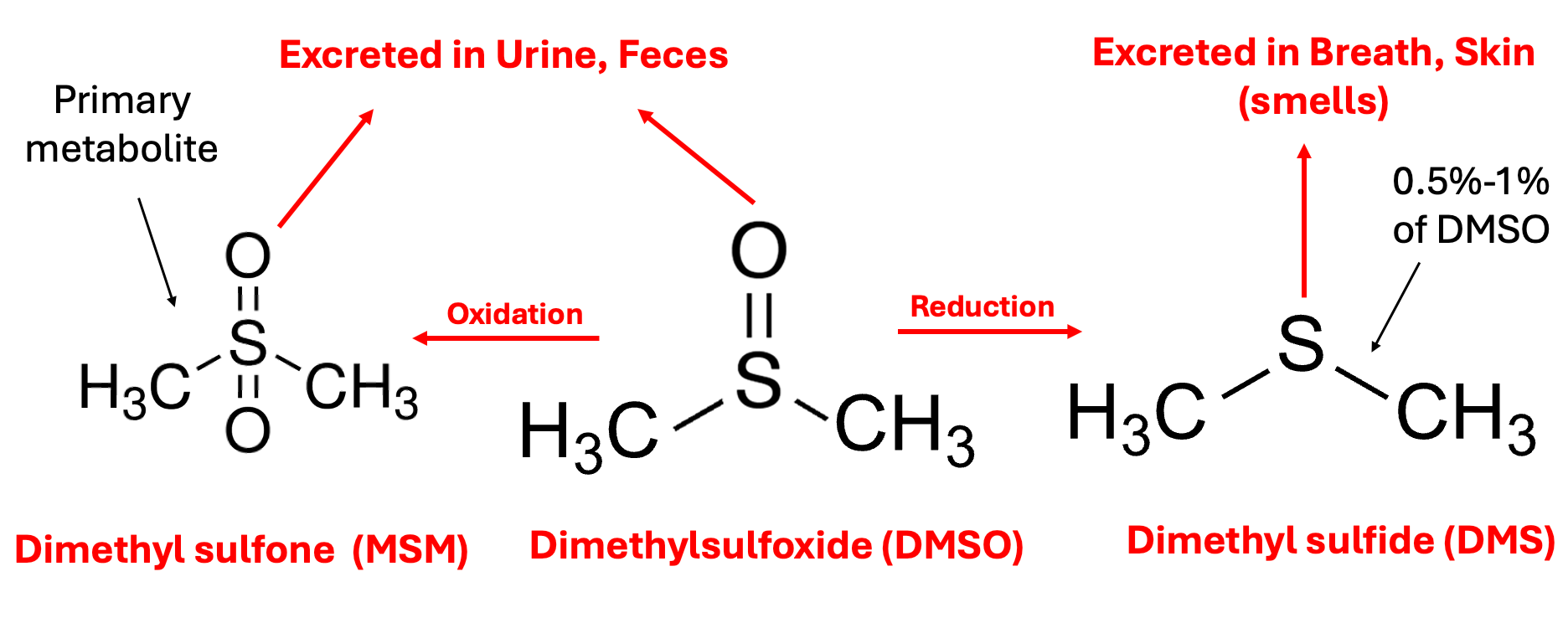
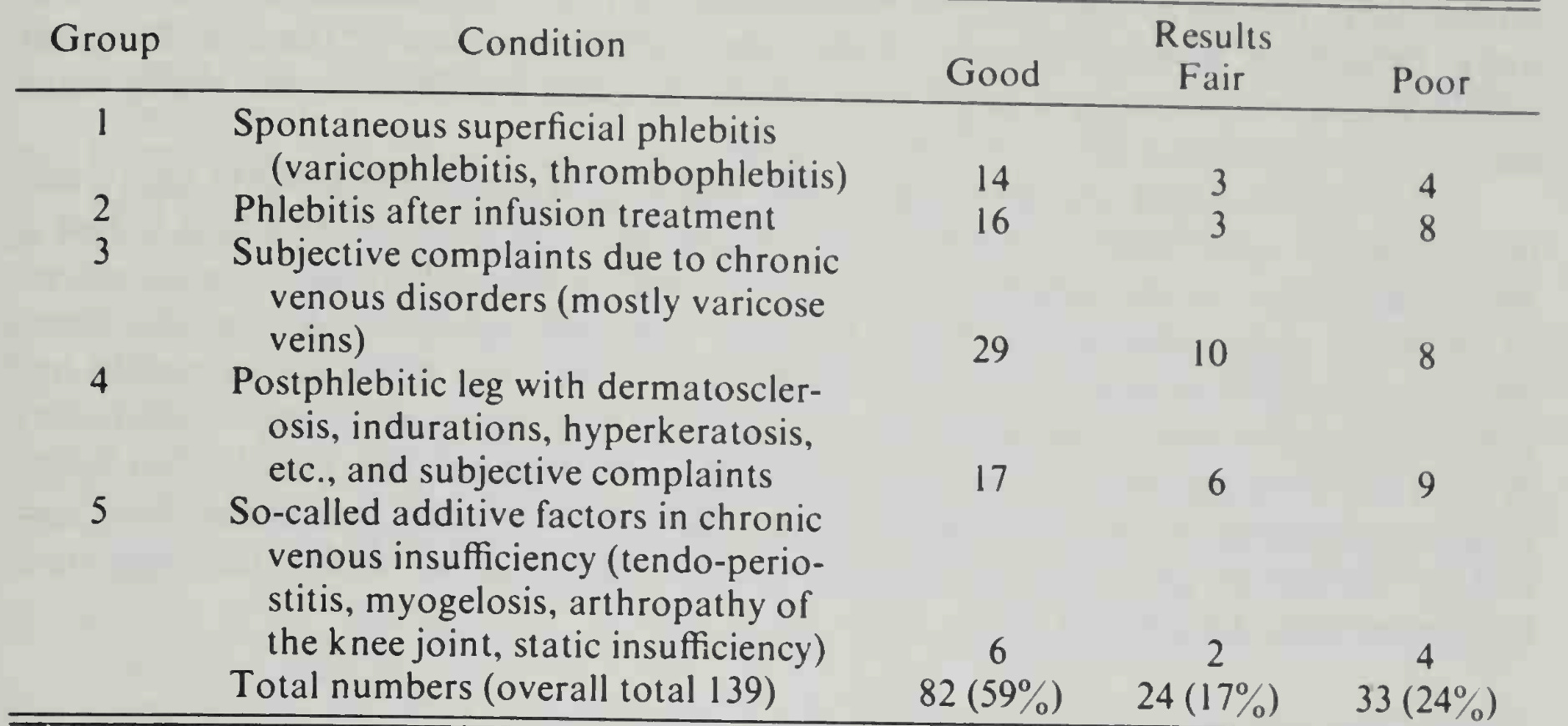
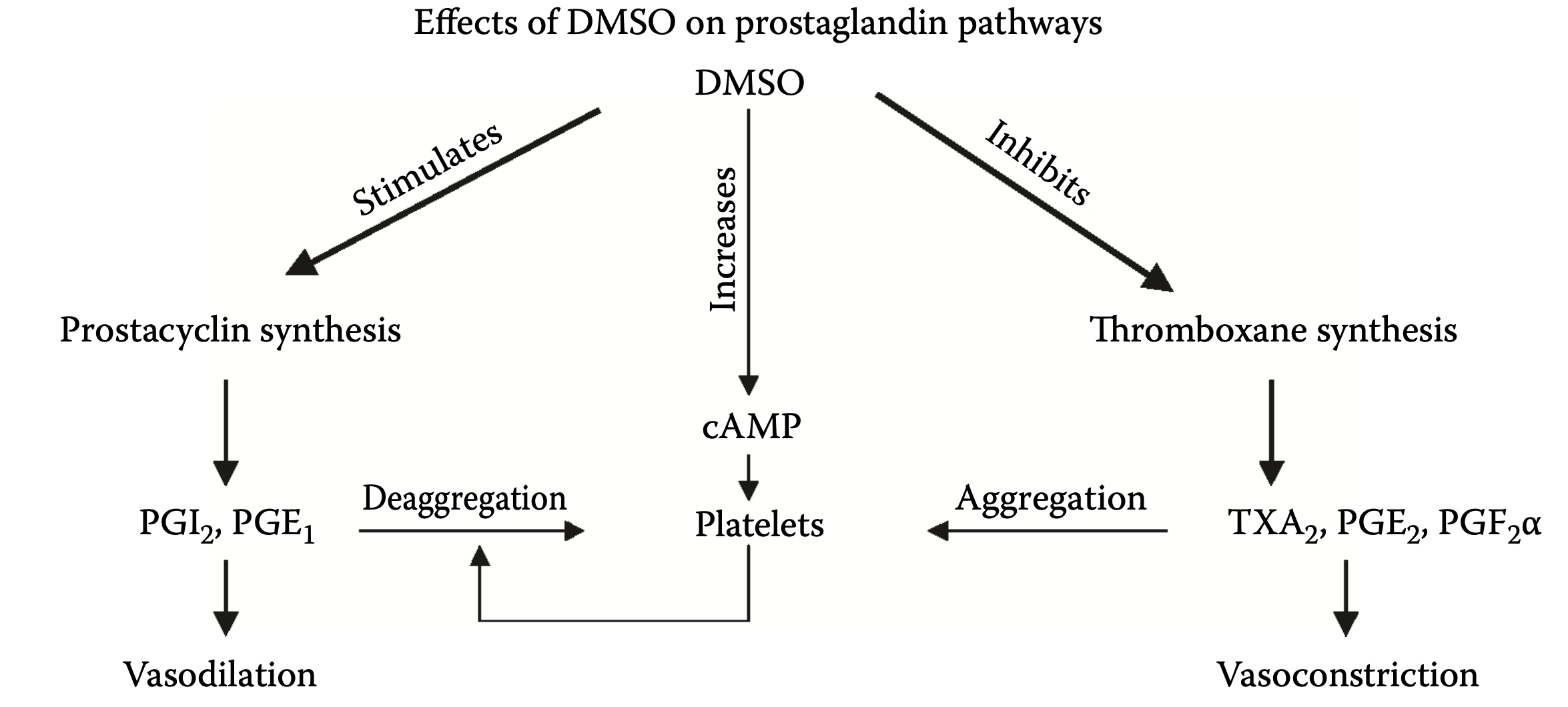
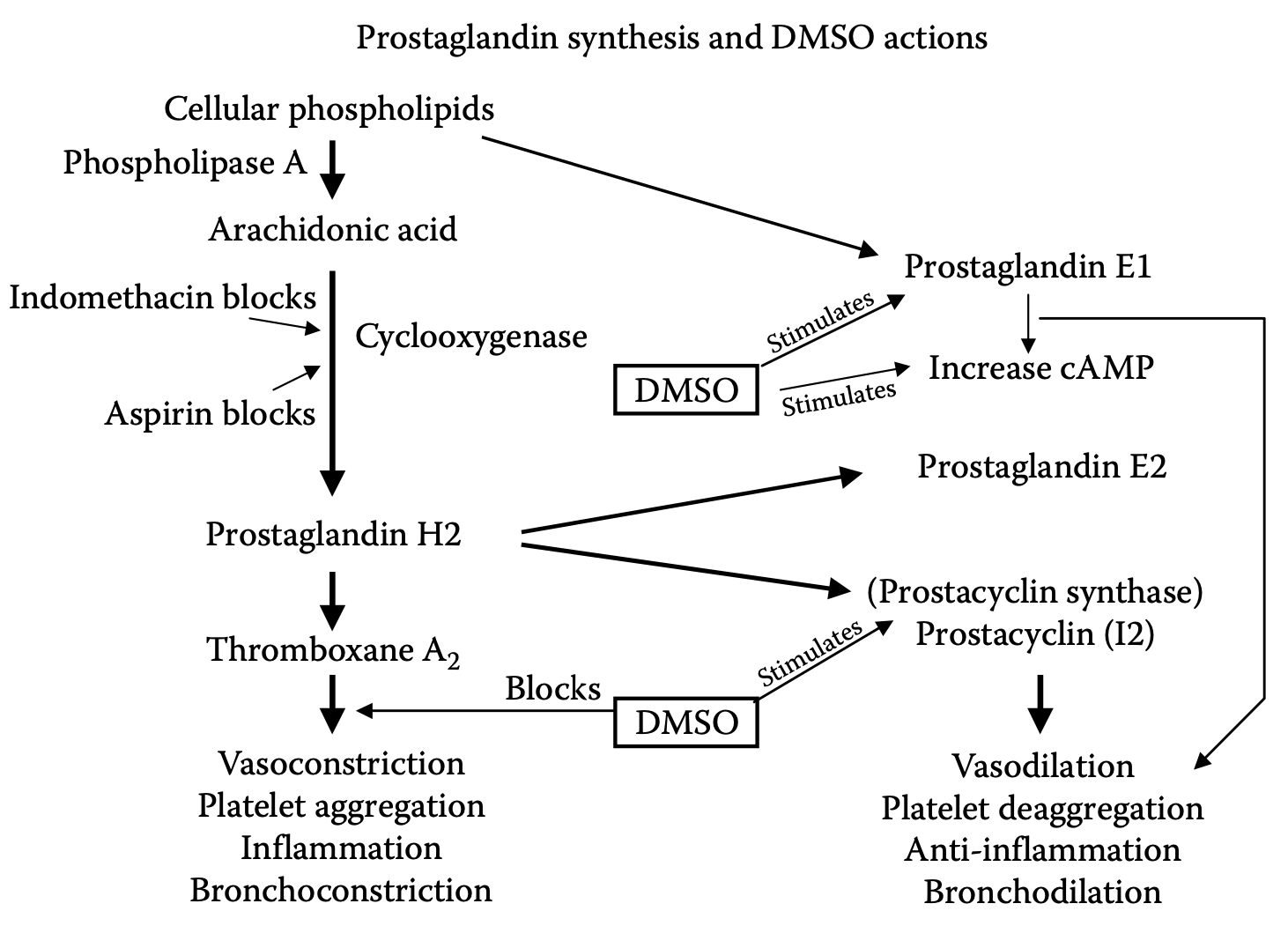
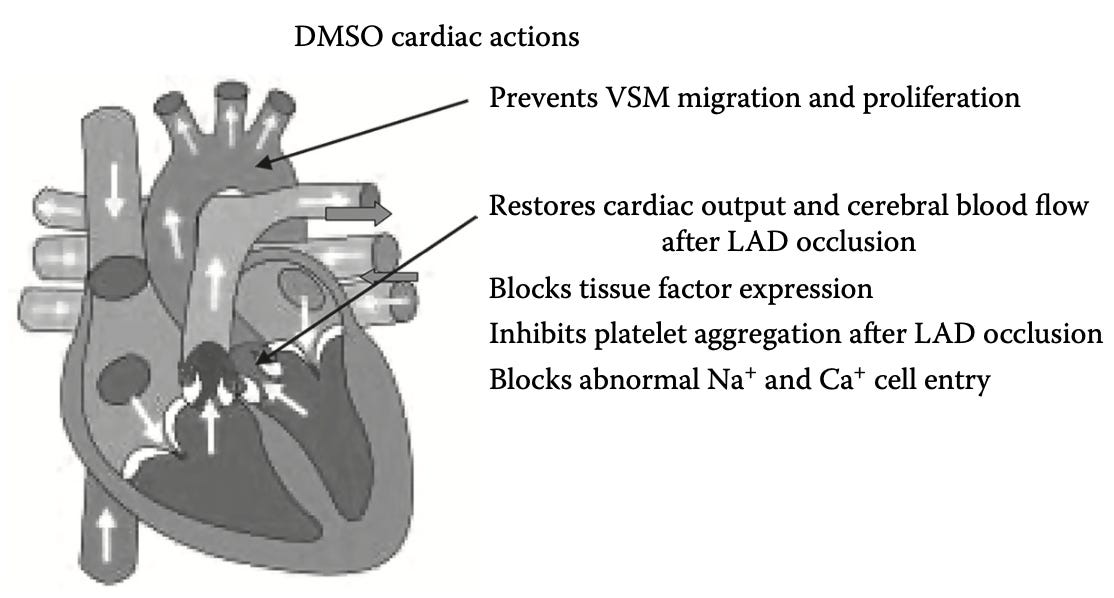
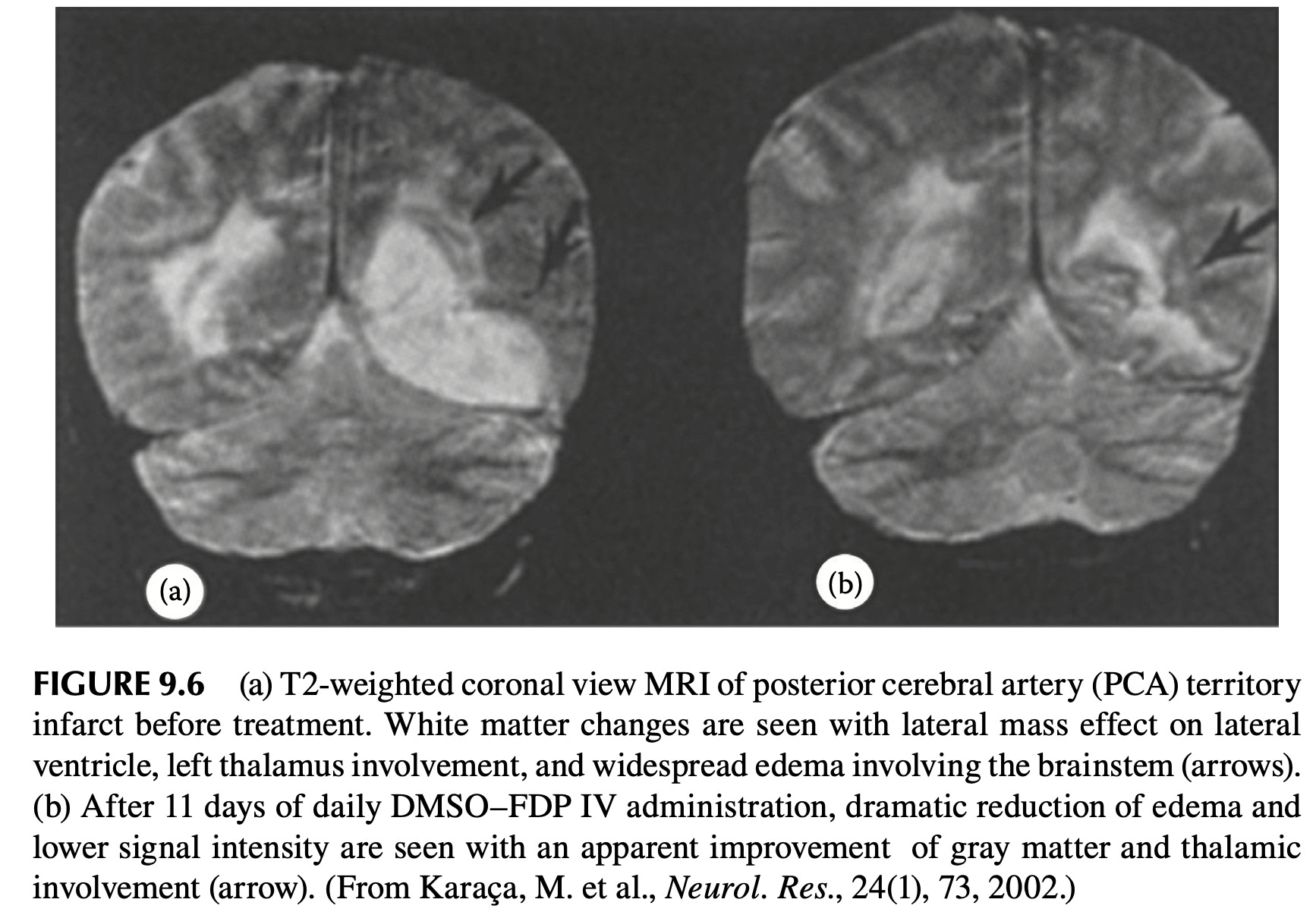
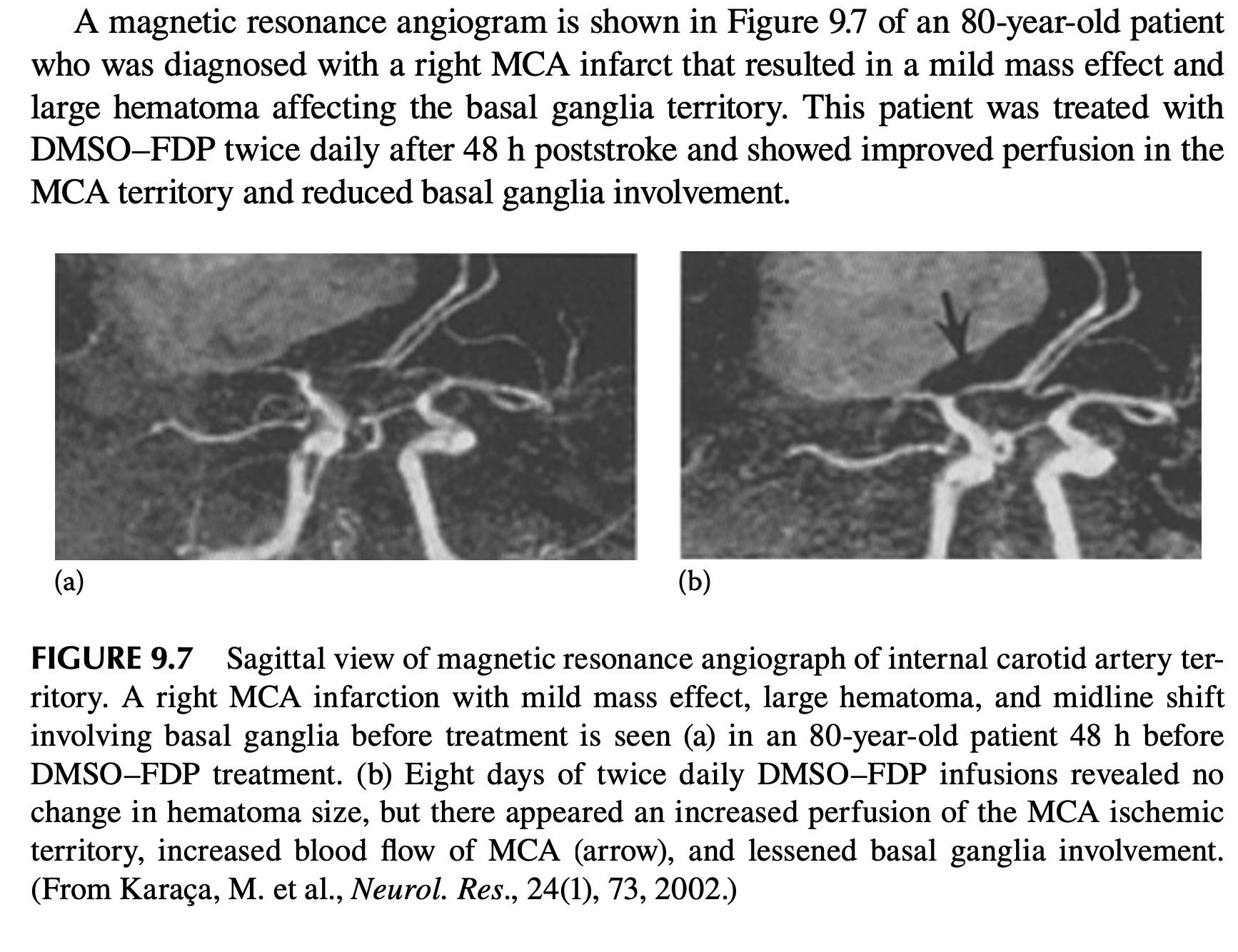
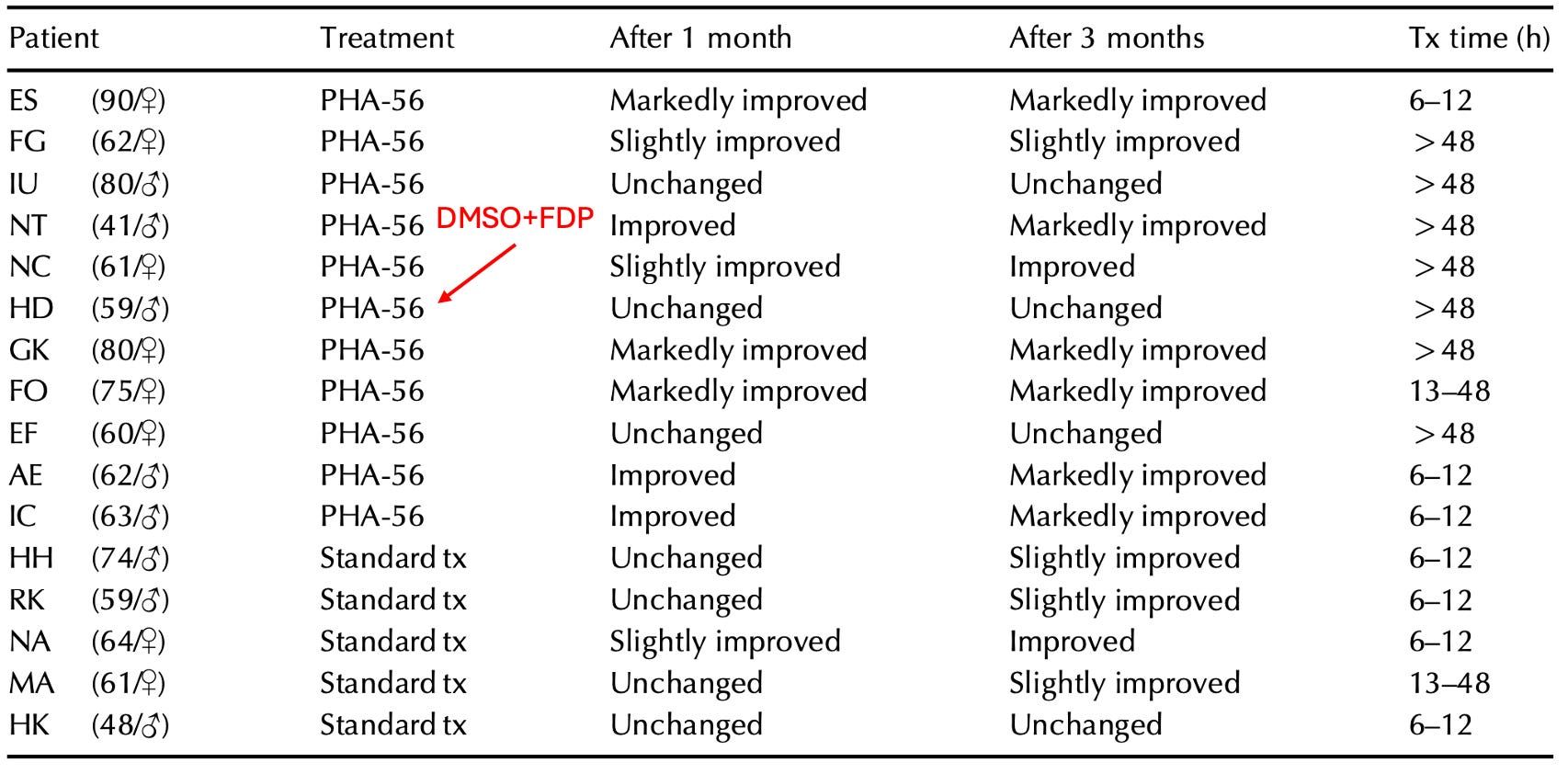

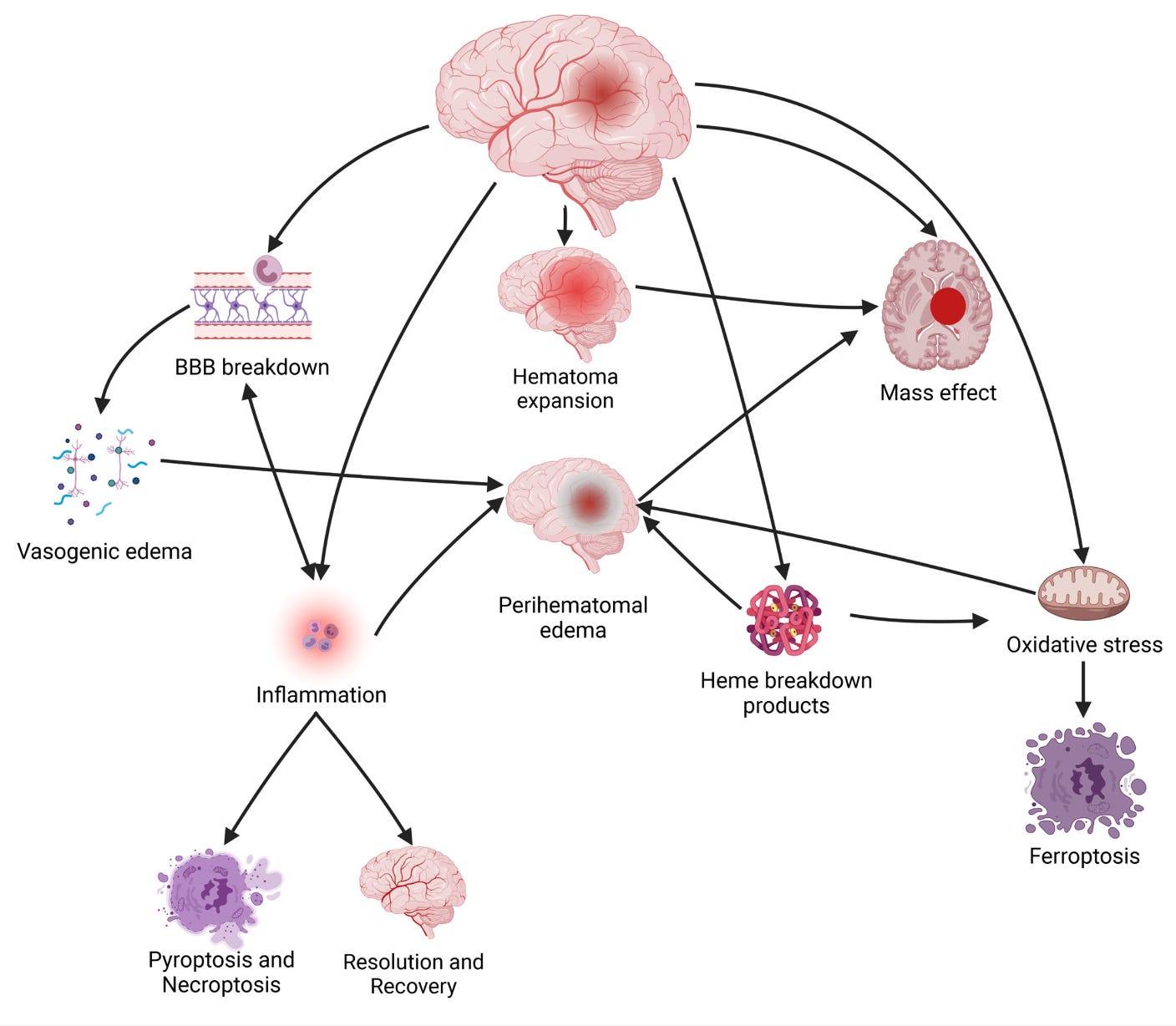
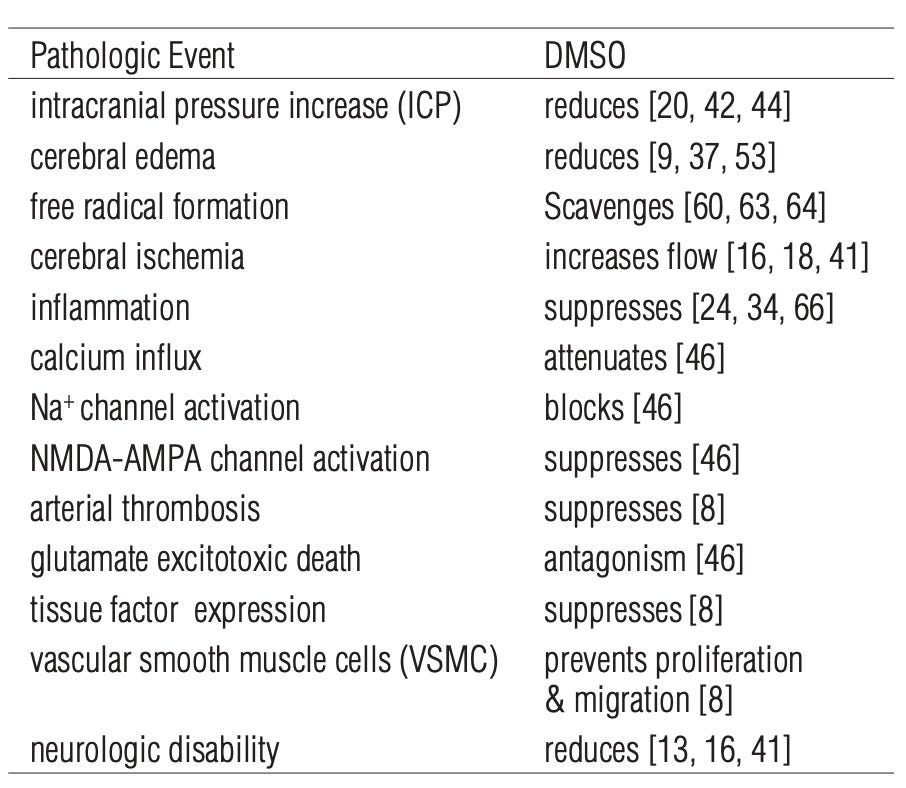
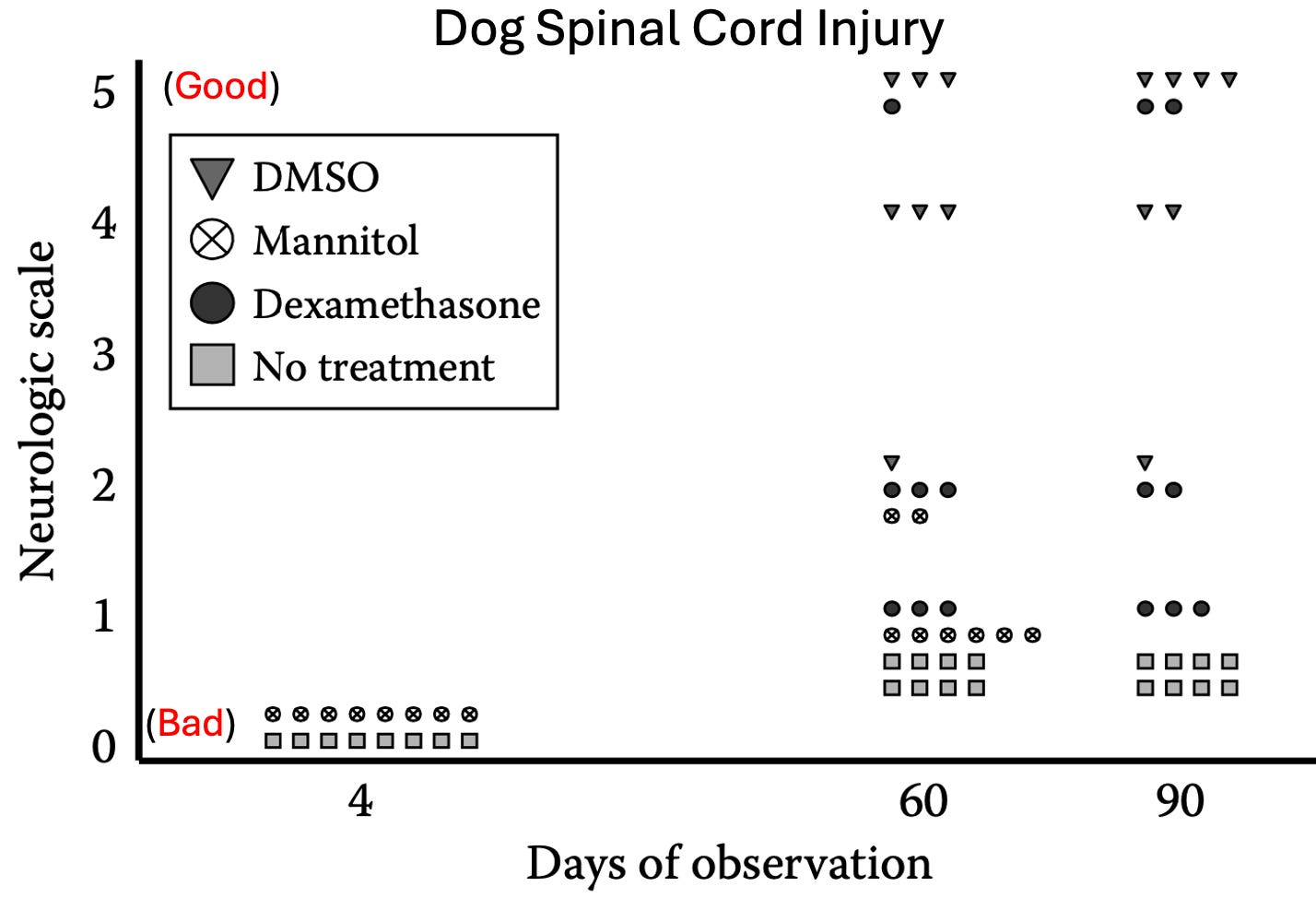
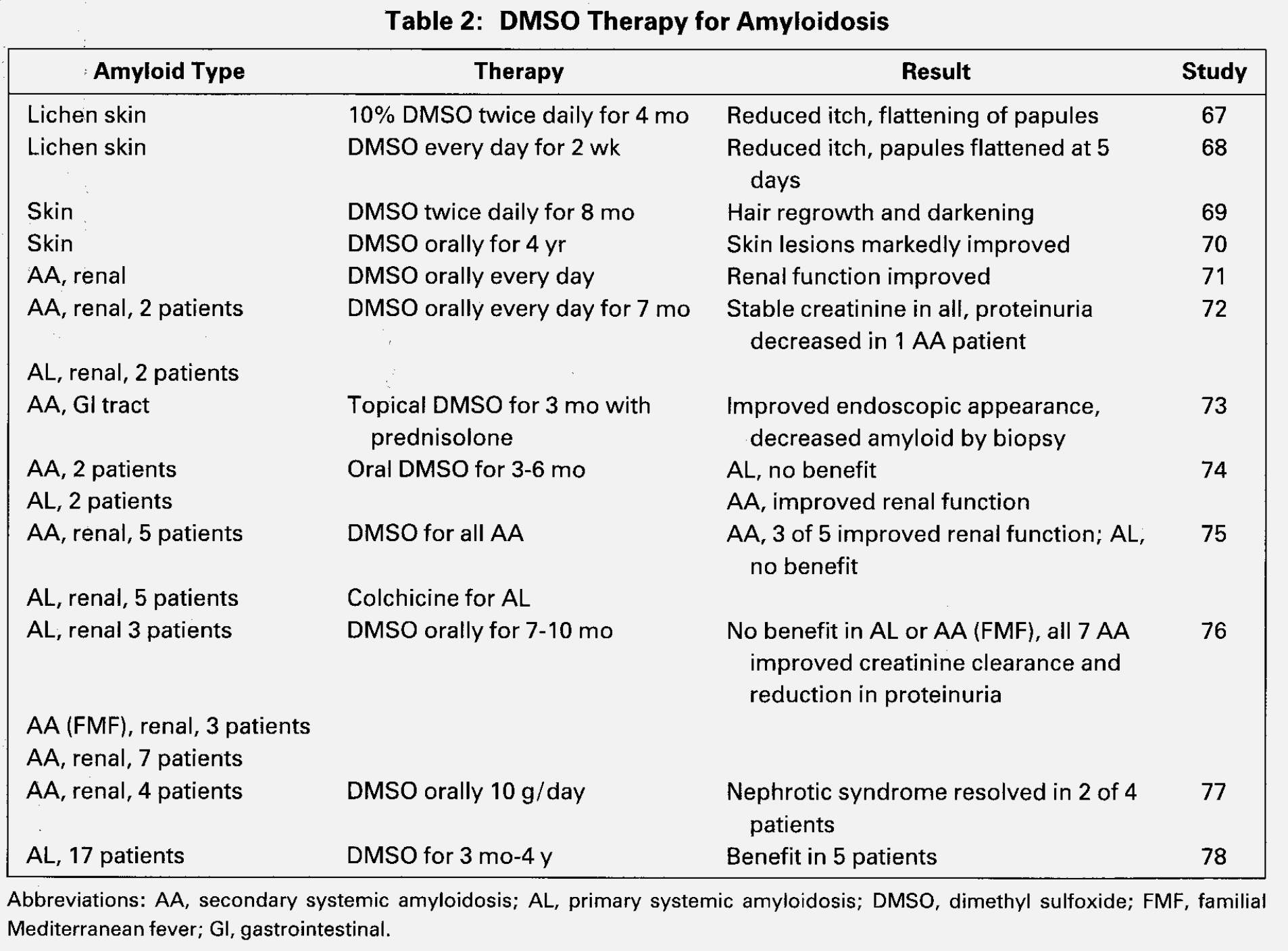
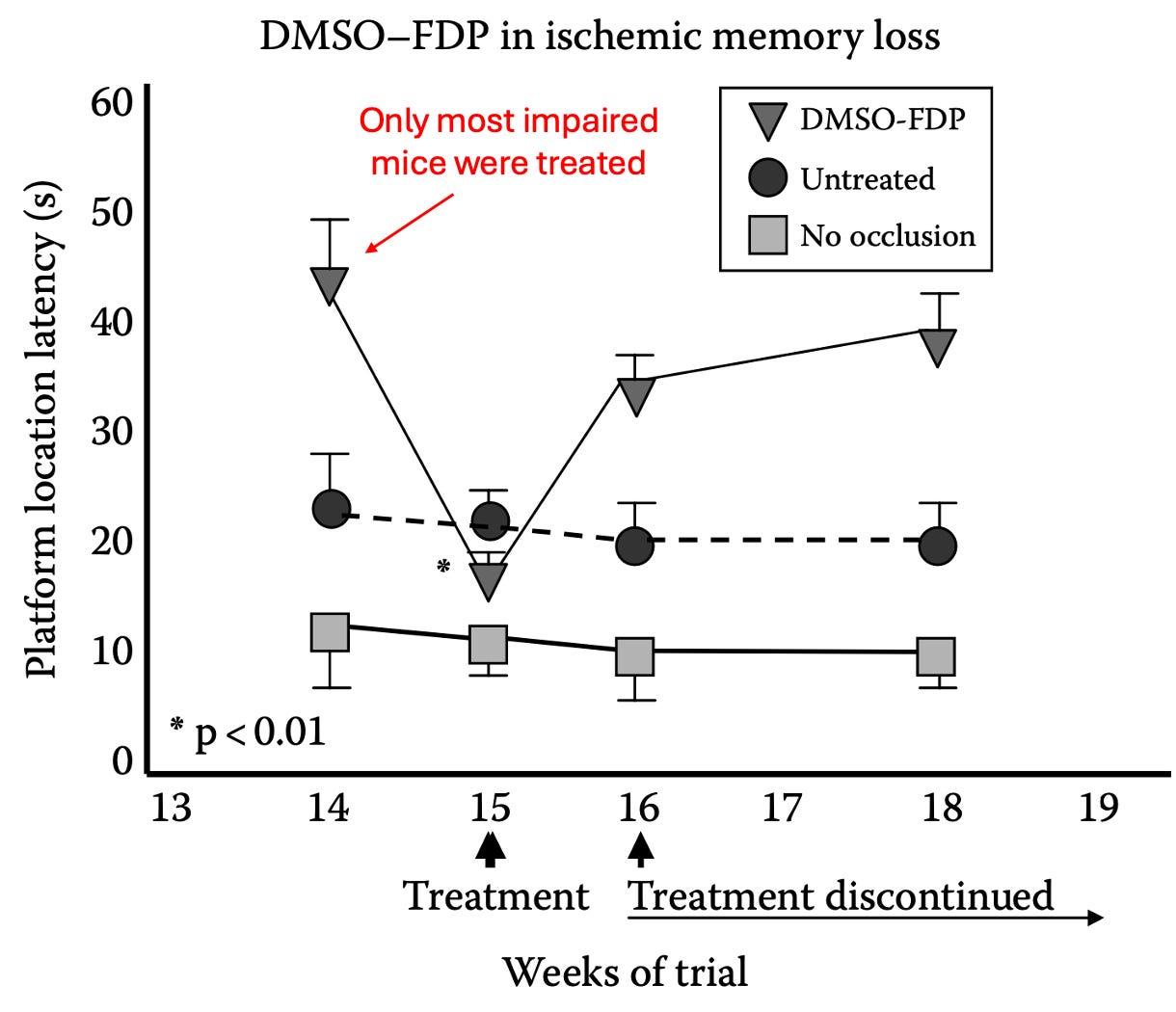

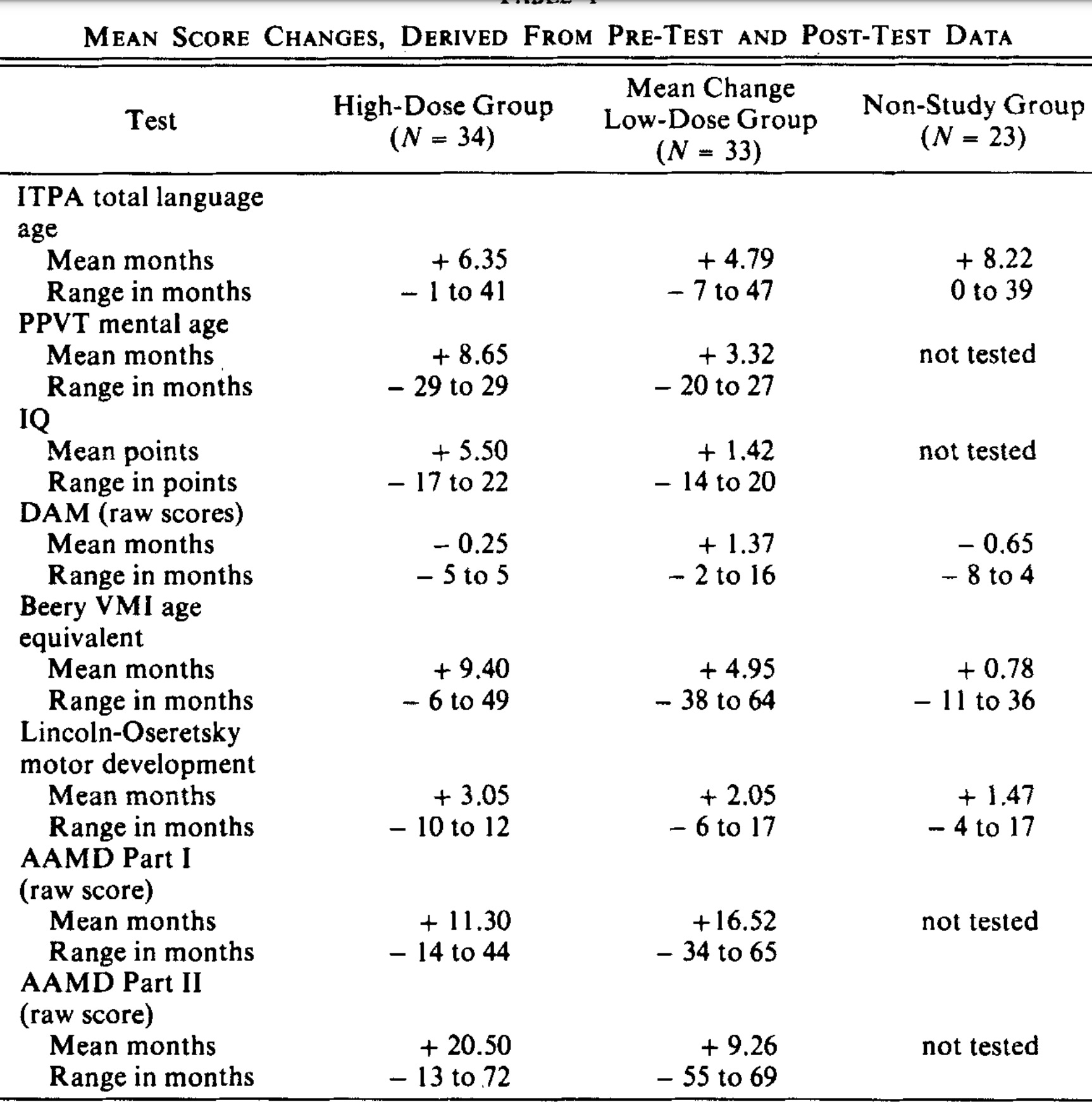

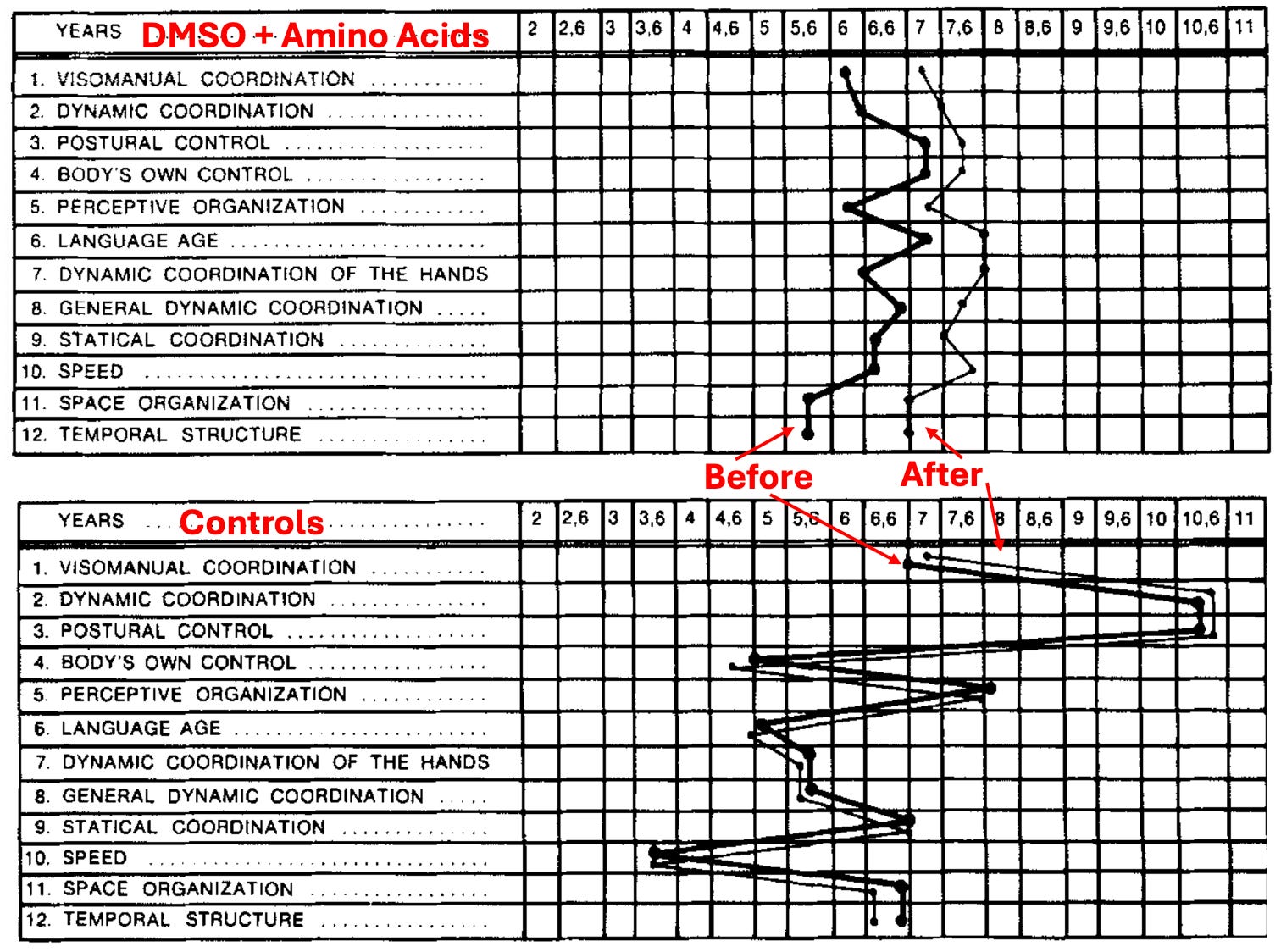
No comments:
Post a Comment